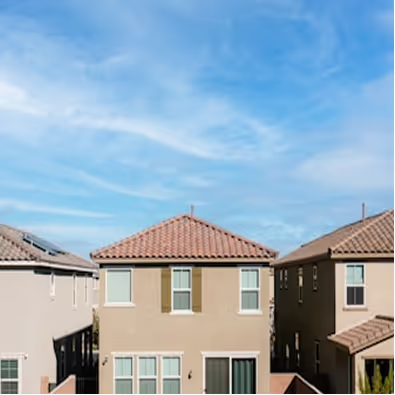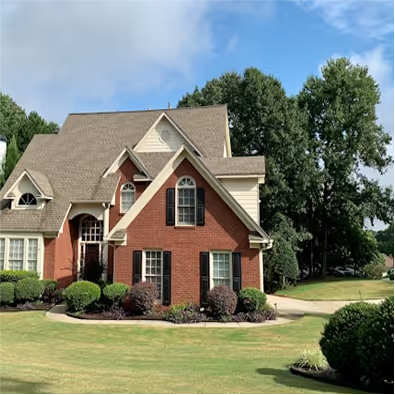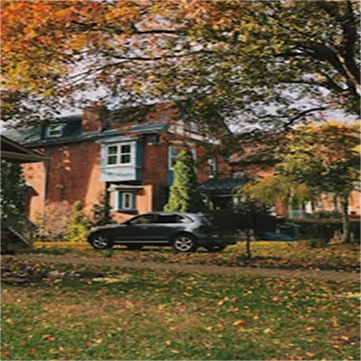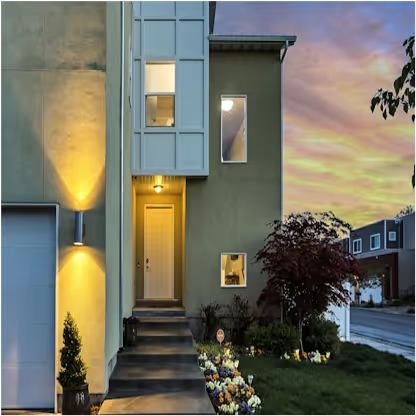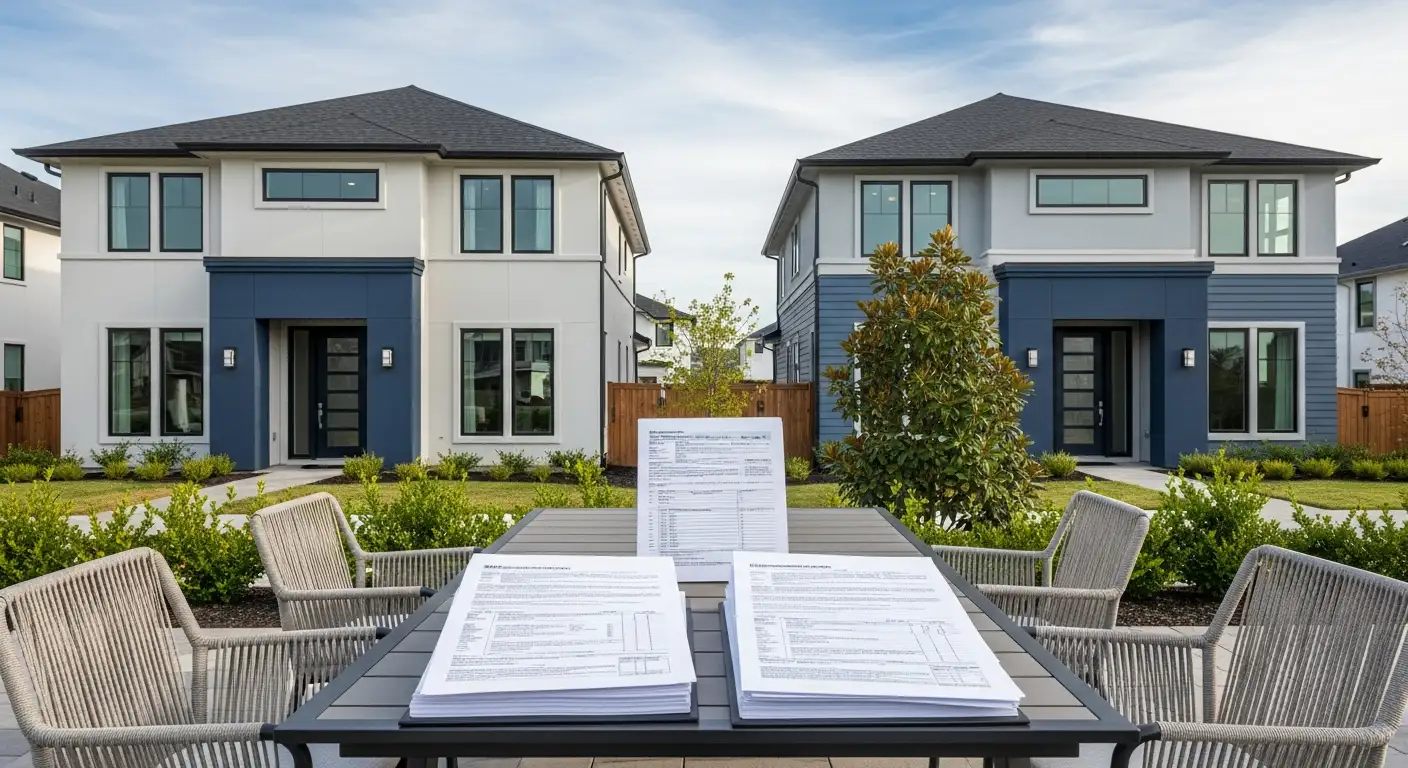Understanding the Landscape of Low Down Payment Mortgage Options
In an era where homeownership remains a prime financial goal, understanding the array of low down payment mortgage options has never been more critical. This guide explores federal-backed programs, lender-specific solutions, and the pros and cons of low and no down payment mortgages to empower prospective buyers with choices that fit their financial profiles and homeownership aspirations.
Current Trends in Down Payments for Homebuyers
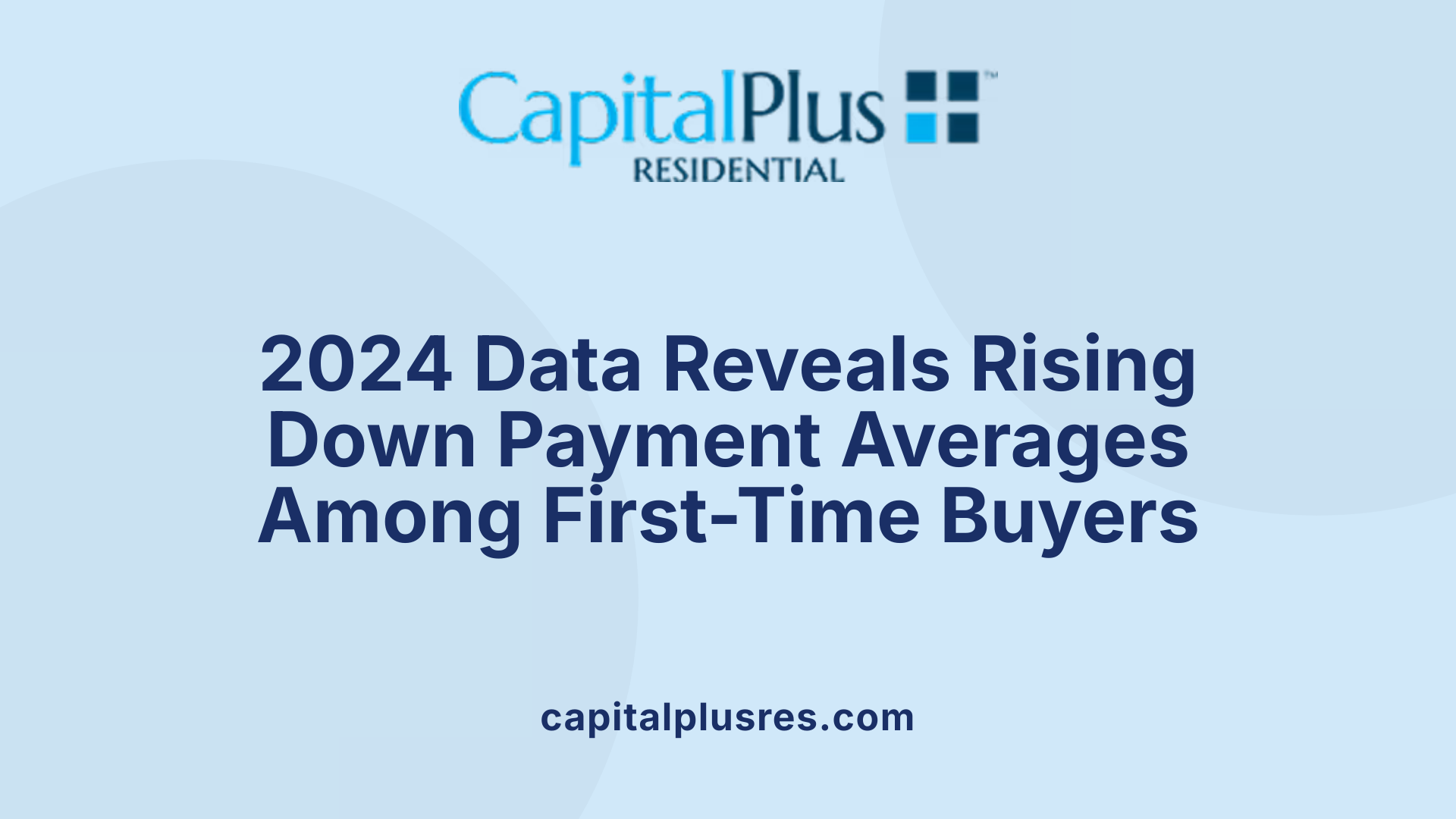
What is the average and median down payment amount for first-time homebuyers in 2024?
In 2024, first-time homebuyers are making down payments that average about 9% of the home's purchase price. This figure also represents the median down payment percentage, marking the highest level seen since 1997. The trend toward larger down payments reflects evolving market dynamics and potentially tighter lending standards.
This increase in down payment size can influence the affordability and accessibility of homeownership for many buyers. While some buyers leverage low and no down payment mortgage options, the overall data shows a shift toward putting more cash upfront.
Understanding this trend is essential for prospective buyers, lenders, and policymakers as it impacts mortgage affordability and homebuying strategies going forward.
Government-Backed No-Down-Payment Mortgage Options

What government-backed mortgage options are available with no down payment?
VA loans and USDA loans stand out as prominent government-backed mortgage options that require no down payment, making homeownership more accessible to eligible buyers.
VA Loans
VA loans are guaranteed by the U.S. Department of Veterans Affairs. They typically require no down payment and do not include mortgage insurance, which can significantly reduce monthly costs. Instead, VA loans include a funding fee ranging from 1.25% to 3.3% of the loan amount, depending on factors such as the borrower’s military service status and the size of the down payment, if any.
USDA Loans
USDA loans, backed by the U.S. Department of Agriculture, also require no down payment. Eligible rural and suburban homebuyers benefit from an upfront guarantee fee of 1% of the loan amount, which can be rolled into the mortgage. Additionally, USDA loans charge an annual fee of 0.35% of the loan balance for the duration of the loan. These loans are aimed at helping moderate- and low-income families access affordable housing.
Eligibility Criteria and Fees
Both VA and USDA loans require borrowers to meet specific eligibility standards. VA loans are available to eligible veterans, active service members, and certain military spouses, generally without income limits. USDA loans impose income limits that vary by location and household size, ensuring assistance reaches those in need. While both loans offer zero down payment, borrowers should consider associated fees such as the VA funding fee and USDA guarantee and annual fees.
No Mortgage Insurance Requirements
Unlike many conventional or FHA loans, VA loans do not require monthly or upfront mortgage insurance premiums. USDA loans do not carry traditional mortgage insurance but do require an annual fee, which is typically lower in cost compared to standard mortgage insurance premiums.
These government-backed no-down-payment loans provide vital pathways for qualified buyers to achieve homeownership without substantial upfront cash, though borrowers should evaluate fees and eligibility carefully to select the best mortgage option.
Low Down Payment Conventional Mortgage Programs
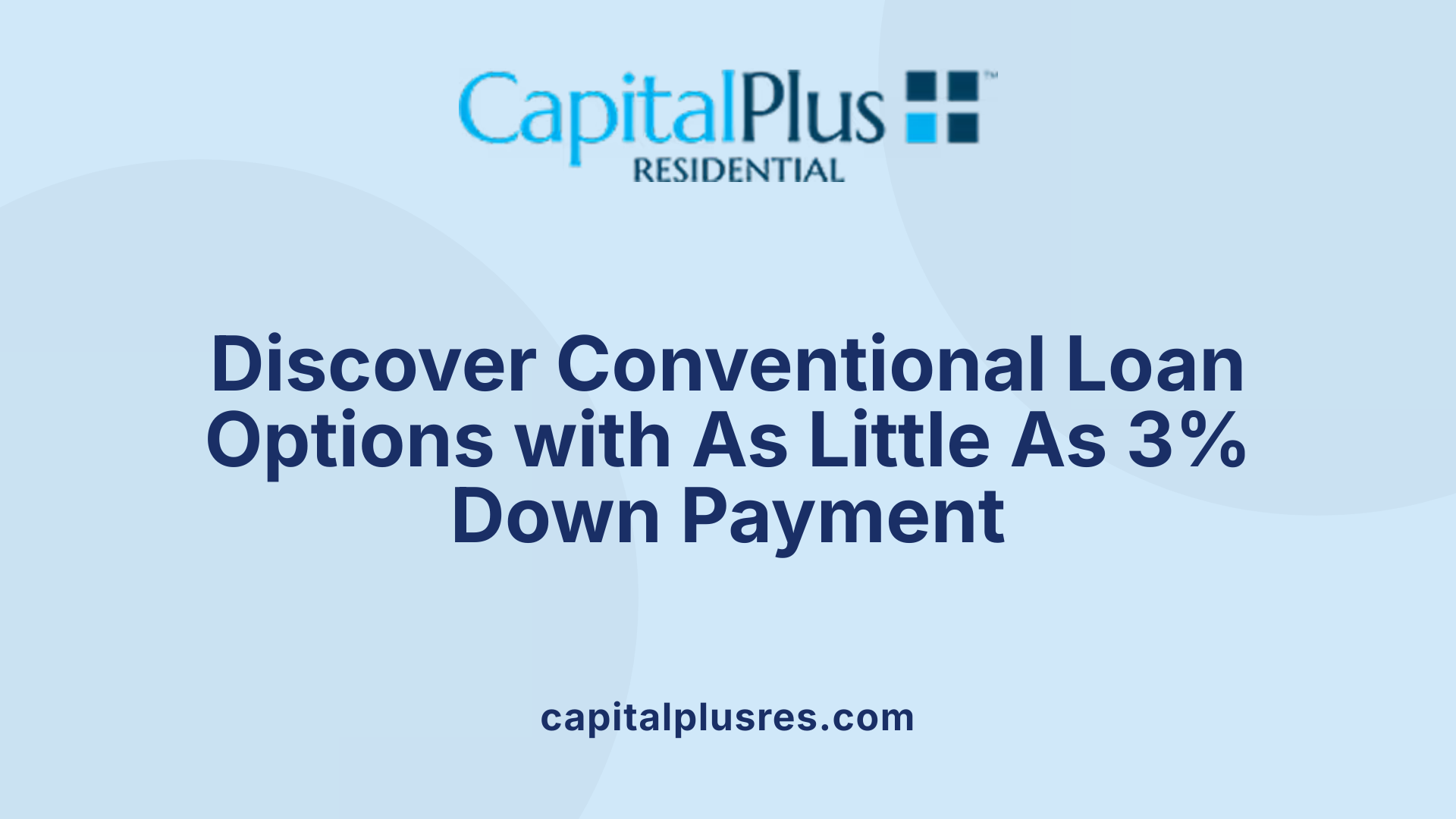
What conventional mortgage programs offer low down payment options and what are their requirements?
Conventional mortgage programs have evolved to support buyers needing lower down payments. Programs like Conventional 97, Fannie Mae HomeReady, Freddie Mac Home Possible, and HomeOne allow for down payments as low as 3%. These options provide a practical path to homeownership for many buyers who may not have large upfront cash reserves.
Down payment and Private Mortgage Insurance (PMI)
Though these programs enable smaller upfront payments, borrowers must typically pay private mortgage insurance (PMI). PMI protects the lender if the borrower defaults and is required until you build enough equity in the home, usually around 20% of the loan value. Paying PMI increases monthly mortgage costs but makes home financing accessible sooner.
Eligibility requirements for low down payment conventional loans
Eligibility criteria generally include a minimum credit score of around 620 or higher, helping ensure borrower reliability. Income limits may apply depending on the program, but many aim to assist first-time or low- to moderate-income buyers. Each program also has specific underwriting guidelines, so borrowers should consult with lenders who offer these options to understand their individual qualifications.
These conventional low down payment options balance affordability and accessibility while maintaining mortgage standards, benefiting buyers who need to conserve savings yet want to enter the housing market quickly.
FHA Loans as a Flexible Low Down Payment Solution
How do FHA loans accommodate low down payments and what are the credit requirements?
FHA loans are designed to help borrowers with limited savings and less-than-perfect credit achieve homeownership. They require a minimum down payment of 3.5% for those with credit scores of 580 and above. For borrowers whose scores fall between 500 and 579, the down payment requirement rises to 10%.
This tiered down payment system allows more flexibility for buyers who might not qualify for conventional loans. FHA loans are particularly appealing because they accept lower credit scores than many other loan products, broadening access for individuals who may have faced credit challenges.
Mortgage Insurance Premiums and Overall Costs
While FHA loans ease down payment barriers, they include mortgage insurance premiums (MIP) that borrowers must pay. These premiums consist of an upfront fee, typically 1.75% of the loan amount, which can be financed into the mortgage. Additionally, an annual MIP is charged monthly, increasing the overall loan cost. This insurance protects lenders but means borrowers carry extra expenses over the life of the loan.
Despite these costs, many find FHA loans a valuable option due to their lenient credit requirements and lower upfront cash needed.
Credit Score Requirements and Flexibility
FHA loans are notable for their comparatively low credit score requirements, usually starting at 500, though lenders often prefer 580 or higher. This flexibility means that buyers with limited credit history or past difficulties have a better chance of loan approval. It also allows more buyers to secure government-backed financing when other loan types might not be accessible.
Lender-Specific Low Down Payment Programs and Assistance
Which lenders provide low down payment options and what types of assistance do they offer?
Many lenders offer accessible options for homebuyers seeking low or no down payment mortgages. Rocket Mortgage is notable for its ONE+ program, which can cover part of the down payment, enabling borrowers to put down as little as 1%. Guild Mortgage also offers low down payment solutions, making homeownership more attainable.
Wells Fargo stands out with programs like the Homebuyer Access® grant, which provides up to $10,000 for down payments, and the Dream. Plan. Home.® closing cost credit, offering up to $5,000 toward closing costs. These grants significantly lower the initial financial hurdle for qualified buyers.
Additionally, the Palmetto Home Advantage program in South Carolina provides forgivable down payment assistance of 0%, 3%, or 4% of the loan amount with no monthly payments, supporting first-time and repeat buyers.
Other lenders such as NBKC, Veterans United, Sunmark Credit Union, and PennyMac also offer competitive low-down-payment programs often paired with tools and incentives to ease the buying process. Gift funds from family or friends are commonly accepted across these programs, enhancing affordability.
Overall, these lender-specific programs and assistance tools help reduce upfront costs, offering buyers a variety of options tailored to their credit profile and financial situation to achieve homeownership sooner.
Specialized No Down Payment and Low Down Payment Programs
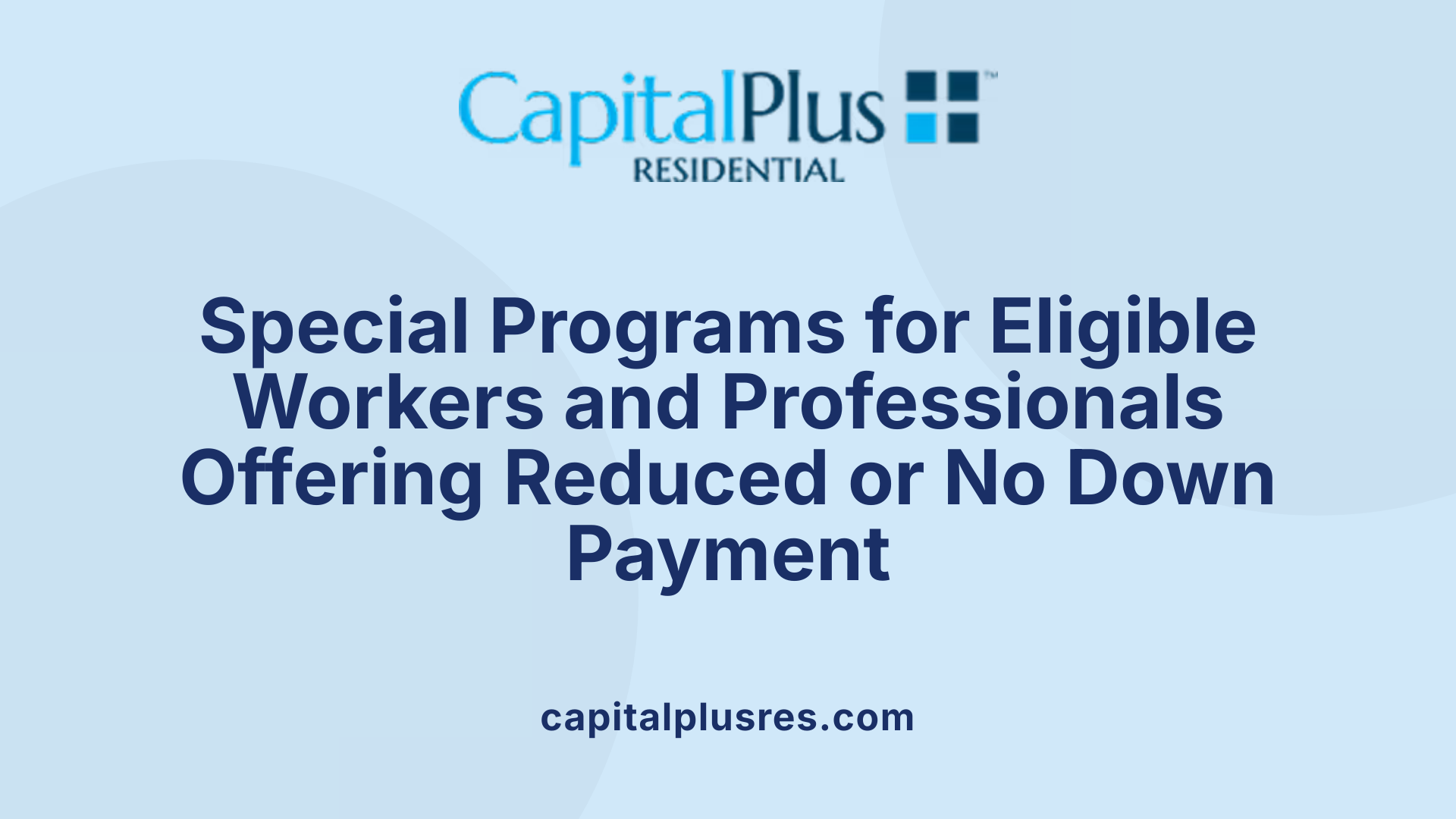
What specialized mortgage programs and eligibility criteria exist for low or no down payment?
Several niche mortgage programs cater to buyers seeking low or no down payment options, expanding accessibility beyond traditional first-time buyer programs.
One notable program is the Good Neighbor Next Door, which offers an up to 50% discount on home prices specifically for eligible public service workers such as teachers, firefighters, and law enforcement officers. This program helps reduce upfront costs significantly and promotes homeownership among essential workers.
Physician mortgages present another specialized option. These loans often require no down payment and allow for higher debt-to-income ratios, recognizing the unique financial situations of medical professionals early in their careers. This flexibility helps physicians acquire homes without the usual down payment savings hurdle.
Importantly, many low and no down payment programs do not have first-time buyer restrictions. For example, the Palmetto Home Advantage program in South Carolina is accessible to first-time, move-up, and repeat buyers alike, although it enforces a credit score minimum of 640 and an income limit of $135,750.
Other government-backed programs like USDA loans also do not require a down payment and have no first-time buyer limitation, though they may apply income limits tied to the property location.
Eligibility across specialized programs typically hinges on credit score minimums, often ranging from 580 to 640. These criteria ensure borrowers have enough creditworthiness while opening doors to homeownership for a broader population.
By offering tailored benefits such as discounts, flexible underwriting, and income-based requirements, these programs address diverse buyer needs and reduce initial financial barriers to purchasing a home.
Financial Considerations and Eligibility Criteria for Low Down Payment Mortgages

What financial factors affect eligibility and approval for low down payment mortgages?
Eligibility for low down payment mortgages is influenced by several financial considerations, with credit score requirements often ranging from 580 to 640 or higher. For example, FHA loans typically require a minimum credit score of 580 for a 3.5% down payment, while some government-backed loans like VA and USDA programs have varying credit criteria but no down payment requirements.
Lenders also carefully evaluate the debt-to-income (DTI) ratio, which helps assess a borrower's ability to manage monthly mortgage obligations alongside existing debts. Maintaining a favorable DTI ratio is crucial to getting approved.
In addition to credit and debts, available savings for down payments and closing costs are significant factors. Although several programs offer down payments as low as 0% to 3%, borrowers must account for associated fees such as mortgage insurance premiums or funding fees, especially in FHA and VA loans.
Importance of financial assessment and lender consultation
Due to the complexity of qualifying standards and program options, lenders stress the importance of a comprehensive financial assessment. Prospective borrowers are encouraged to consult mortgage professionals who can guide them through various loan programs, eligibility criteria, and their specific financial situations.
Lender consultations provide clarity on loan affordability, potential interest rates, and payment schedules, allowing buyers to make informed decisions. Consulting experts also helps identify the best loan products suited to different income levels, credit profiles, and housing goals.
Loan affordability analysis
Analyzing loan affordability involves considering the principal, interest, taxes, insurance, and possible mortgage insurance costs. Tools provided by lenders, such as mortgage calculators and home affordability estimators, play an important role in this evaluation.
Affordability assessments ensure borrowers can maintain consistent payments without excessive financial strain. This proactive approach mitigates risks associated with low down payment loans, such as higher overall costs and exposure to market fluctuations.
| Factor | Typical Requirement Range | Implication |
|---|---|---|
| Credit Score | 580 to 640+ | Minimum varies by loan type, affects eligibility and rates |
| Debt-to-Income Ratio (DTI) | Lenders typically prefer <43% | Ensures manageable monthly payments |
| Down Payment | 0% (VA, USDA) to 5%+ | Influences mortgage insurance and loan terms |
| Savings for Fees | Variable (closing, insurance fees) | Required even for low or no down payment options |
| Consultation | Recommended | Helps match borrowers with suitable loan programs |
Pros and Cons of Low and No Down Payment Mortgages
What are the advantages and disadvantages of choosing low or no down payment mortgages?
Choosing a low or no down payment mortgage can significantly speed up the path to homeownership. One major advantage is that buyers can conserve cash that would otherwise be tied up in a large down payment. This preserved cash can be used for moving expenses, home improvements, or emergency savings.
However, there are trade-offs to consider. Low down payment loans usually result in lower initial home equity, making homeowners more vulnerable if housing prices decline. Additionally, these mortgages often come with higher interest rates and sometimes require private mortgage insurance, which increases monthly costs.
Long-term risks of low equity loans include greater exposure to market fluctuations and potentially higher chances of foreclosure if the borrower faces financial difficulties. The larger loan balances associated with low down payments also mean higher total interest paid over the loan term.
In summary, while low and no down payment mortgages offer quicker homeownership and cash flexibility, buyers need to weigh these benefits against the disadvantages of higher costs and increased financial risks over time.
Major Lenders and Online Platforms Leading in Low Down Payment Offerings
Who are the leading lenders offering low down payment mortgages and what advantages do they offer?
In 2025, several top lenders stand out for their extensive low down payment mortgage options. These include Rocket Mortgage, Guild Mortgage, Bank of America, loanDepot, Pennymac, Better Mortgage, PenFed, and Northpointe Bank. They provide a broad variety of loan programs catering to different borrower needs, such as conventional loans, FHA loans, VA loans, jumbo loans, and USDA loans. This variety ensures prospective homebuyers can find financing solutions tailored to their unique financial situations.
Benefits of online lenders like Rocket Mortgage and Better Mortgage
Online lenders like Rocket Mortgage and Better Mortgage have revolutionized the mortgage application process. They offer streamlined digital applications that allow borrowers to complete much of the process from home. Their systems support quick preapprovals, so buyers know their eligibility faster, which is critical in competitive housing markets.
Moreover, these online platforms often charge lower fees compared to traditional lenders, making them more affordable options for many homebuyers. These benefits simplify the mortgage experience, reduce paperwork, and speed up decisions—a major advantage for first-time buyers and those seeking convenience.
Loan program variety and customer service importance
Top lenders not only provide a diverse range of loan products but also prioritize customer service. They offer programs like VA loans with no down payment, FHA loans with as little as 3.5% down, and conventional loans with minimum down payments as low as 3%. Such diversity helps accommodate buyers with varying credit scores and financial profiles.
Customer service excellence includes supporting borrowers with detailed explanations of loan terms, credit requirements, and associated costs. Many lenders provide tools such as mortgage calculators and educational resources to help consumers make informed decisions. The combined focus on product variety and quality customer support ensures that buyers are well-guided through the home financing journey.
Understanding Mortgage Costs Beyond the Down Payment
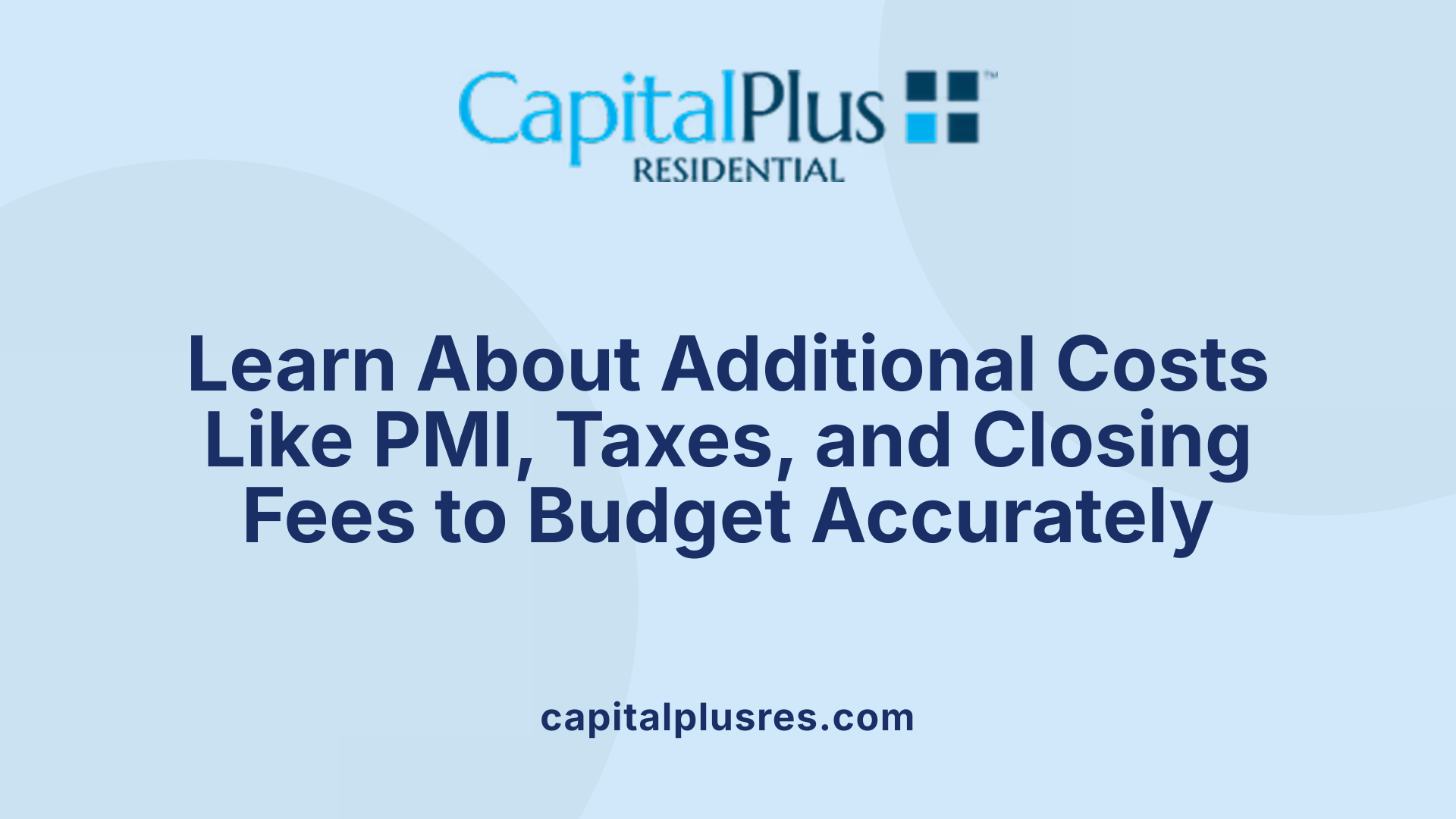
What cost components should borrowers consider besides down payment when getting a mortgage?
When preparing to buy a home, it's important to recognize that the down payment is just one part of the overall mortgage costs.
Mortgage payments generally consist of several components:
- Principal: The amount borrowed that you repay over time.
- Interest: The cost charged by the lender for borrowing money.
- Taxes: Property taxes assessed by local governments, often included in monthly payments.
- Insurance: Homeowners insurance protecting against loss or damage.
- Private Mortgage Insurance (PMI): Typically required for many loans with down payments under 20%, PMI protects lenders if a borrower defaults.
For low-down-payment mortgages, PMI can add to monthly costs, sometimes significantly.
Beyond the monthly payments, prospective buyers should also plan for closing costs, which can include:
- Lender fees and origination charges
- Home appraisal and inspection fees
- Title search and insurance
- Recording fees
- Prepaid taxes and insurance reserves
These fees vary widely by lender and location but often amount to several thousand dollars.
Understanding these additional costs alongside the down payment helps buyers realistically assess what they can afford and avoid surprises during the homebuying process.
Mortgage Interest Rates and Their Impact on Low Down Payment Loans
What Are the Current Mortgage Interest Rate Ranges in 2025?
Mortgage interest rates for 2025 generally fall between 6% and 7%. These rates have been shaped by broader economic factors and influence the cost of borrowing for homebuyers across loan types.
How Do These Rates Affect Monthly Payments?
Interest rates are a crucial factor in monthly mortgage payment calculations. For low down payment loans — which usually involve borrowing a larger principal — even slight increases in interest rates can lead to noticeably higher monthly payments. This is particularly important as buyers with lower initial equity have less financial buffer.
What Is the Impact Over the Duration of the Loan?
Over the lifespan of a loan, typically 15 to 30 years, the cumulative effect of interest rates can significantly increase the total amount paid. Higher interest rates mean more paid in interest, making low down payment mortgages potentially more expensive in the long run. Conversely, securing a rate closer to 6% versus 7% can yield substantial savings.
How Do Mortgage Interest Rates in 2025 Impact Low Down Payment Mortgages?
Mortgage interest rates in 2025 generally range between 6% and 7%. These rates directly affect monthly payments, with higher rates increasing the cost over time, especially on larger loan amounts typical of low down payment mortgages. Securing lower rates can significantly improve affordability across the loan’s duration.
| Factor | Description | Impact on Low Down Payment Loans |
|---|---|---|
| Interest Rate Range | 6% to 7% in 2025 | Influences monthly payment size and total loan costs |
| Monthly Payments | Payments increase proportionally with interest rate | Larger loan balances from low down payments mean more interest |
| Loan Duration | Typically 15-30 years | Total interest paid compounds, affecting overall affordability |
| Rate Sensitivity | Small rate differences can mean significant cost changes | Low down payment borrowers benefit from securing the lowest rate |
Tools and Resources to Navigate Low Down Payment Mortgage Choices
What tools and resources can assist homebuyers in making informed decisions about low down payment mortgages?
Several lenders and online platforms offer valuable tools designed to help buyers understand and choose the right low down payment mortgage.
Mortgage calculators allow prospective homeowners to estimate monthly payments by incorporating principal, interest, taxes, insurance, and private mortgage insurance (PMI) when applicable. These calculators reveal how different down payment amounts influence loan costs and affordability.
Home affordability estimators provide a clear picture of what buyers can realistically afford based on their income, debts, credit score, and other financial factors. This promotes informed decisions before shopping for homes.
Educational resources such as mortgage learning centers explain loan terms, eligibility requirements, and the pros and cons of various programs like FHA, VA, USDA, and conventional loans. These materials often include guidance on how to compare loan estimates and understand closing costs.
Preapproval tools streamline the mortgage application process, offering faster credit checks and personalized loan options, which empower buyers to make competitive offers with confidence.
Together, these resources simplify navigating the complexities of low down payment mortgages, helping buyers identify suitable programs and avoid surprises during the homebuying journey.
Empowering Homebuyers with Informed Choices on Low Down Payment Mortgages
Navigating the diverse landscape of low and no down payment mortgage options requires a thorough understanding of available programs, lender offerings, and financial implications. By leveraging government-backed loans, specialized programs, and assistance from top lenders, prospective buyers can make strategic decisions that align with their financial situations and homeownership goals. Awareness of eligibility requirements, costs beyond the down payment, and interest rate impacts further enhances the ability to select the most suitable mortgage. With the right tools and professional guidance, homebuyers can confidently step onto the property ladder while preserving their financial health.
References
- Best Mortgage Lenders for Low and No Down Payments in ...
- Best Lenders for Low- and No-Down-Payment Mortgages ...
- Palmetto Home Advantage | South Carolina Housing
- Home Mortgage Loans & Financing
- Guide to no-down-payment mortgages: Am I eligible?
- Best Low- and No-Down-Payment Mortgages of November 2025
- Home Purchase Loans: Open the Door to Your New Home
- 8 Best Mortgage Lenders of 2025 | Money
Latest Blog
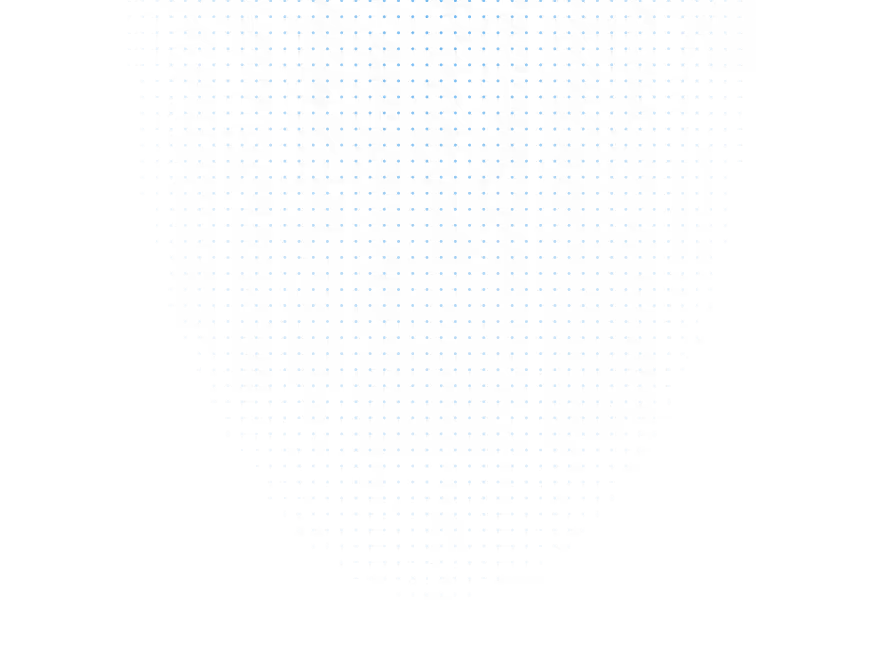

Get Pre-Approved Today
Start your secure online application now so you can get pre-approved for a mortgage (and close on your dream home) quickly within 5 minutes.

